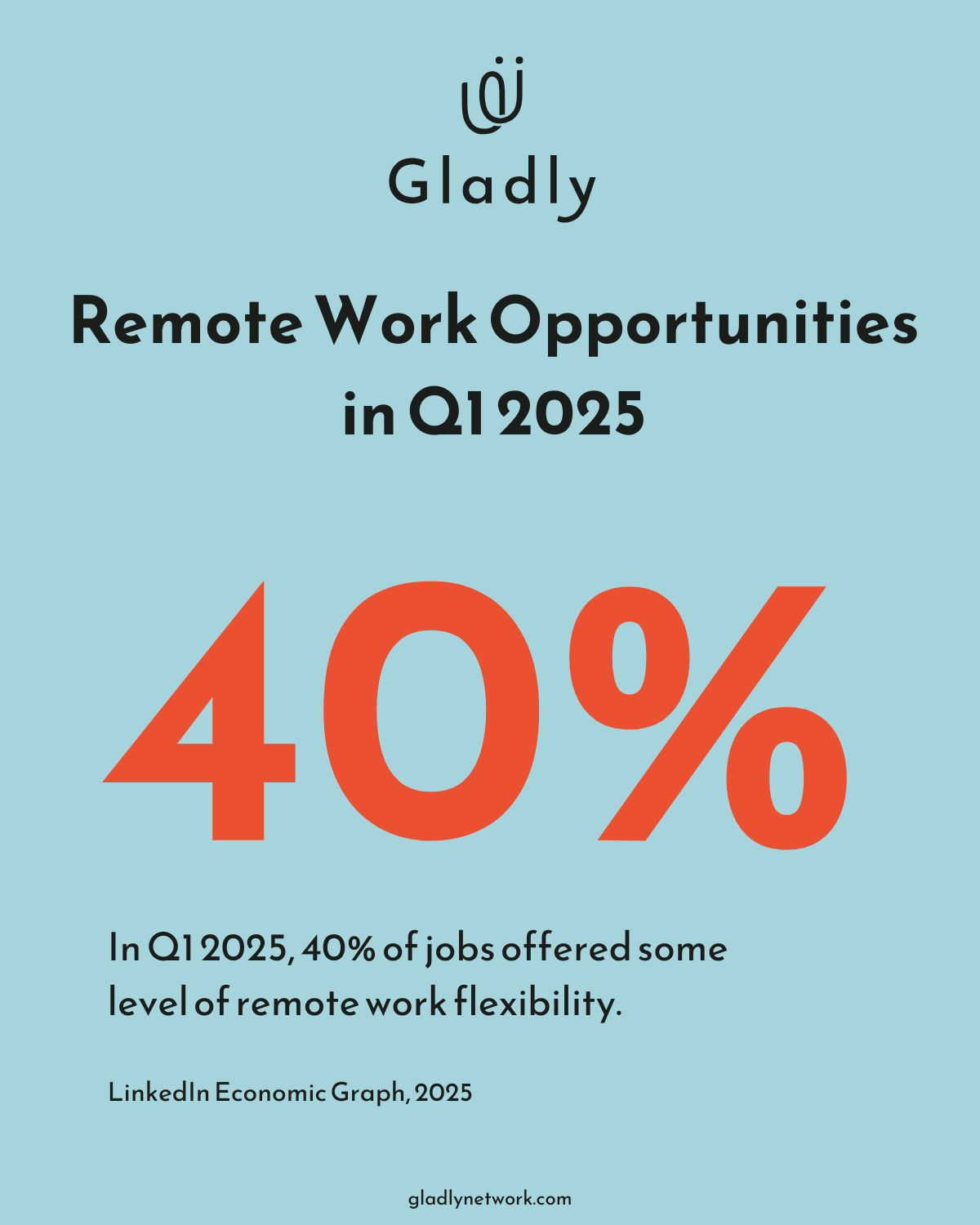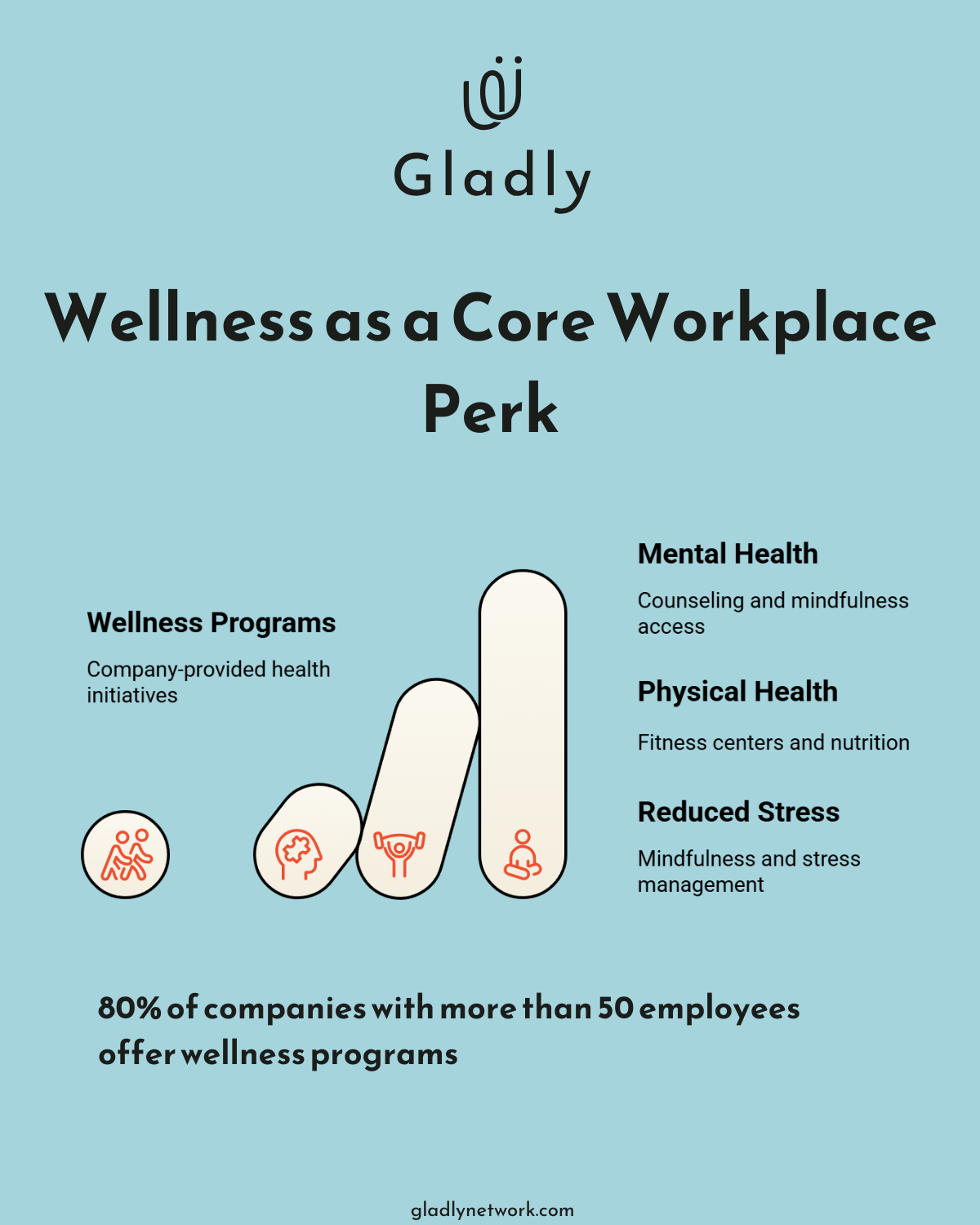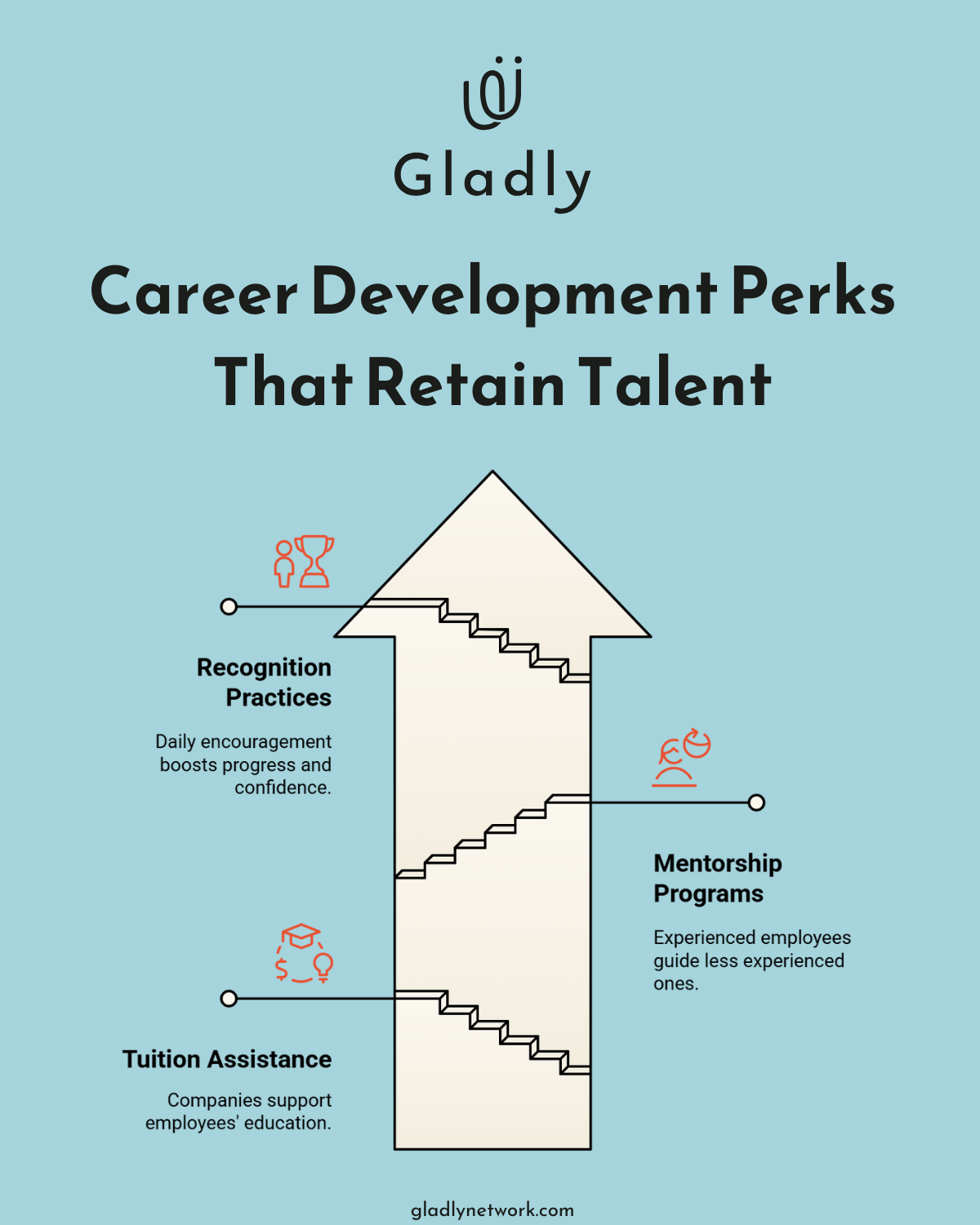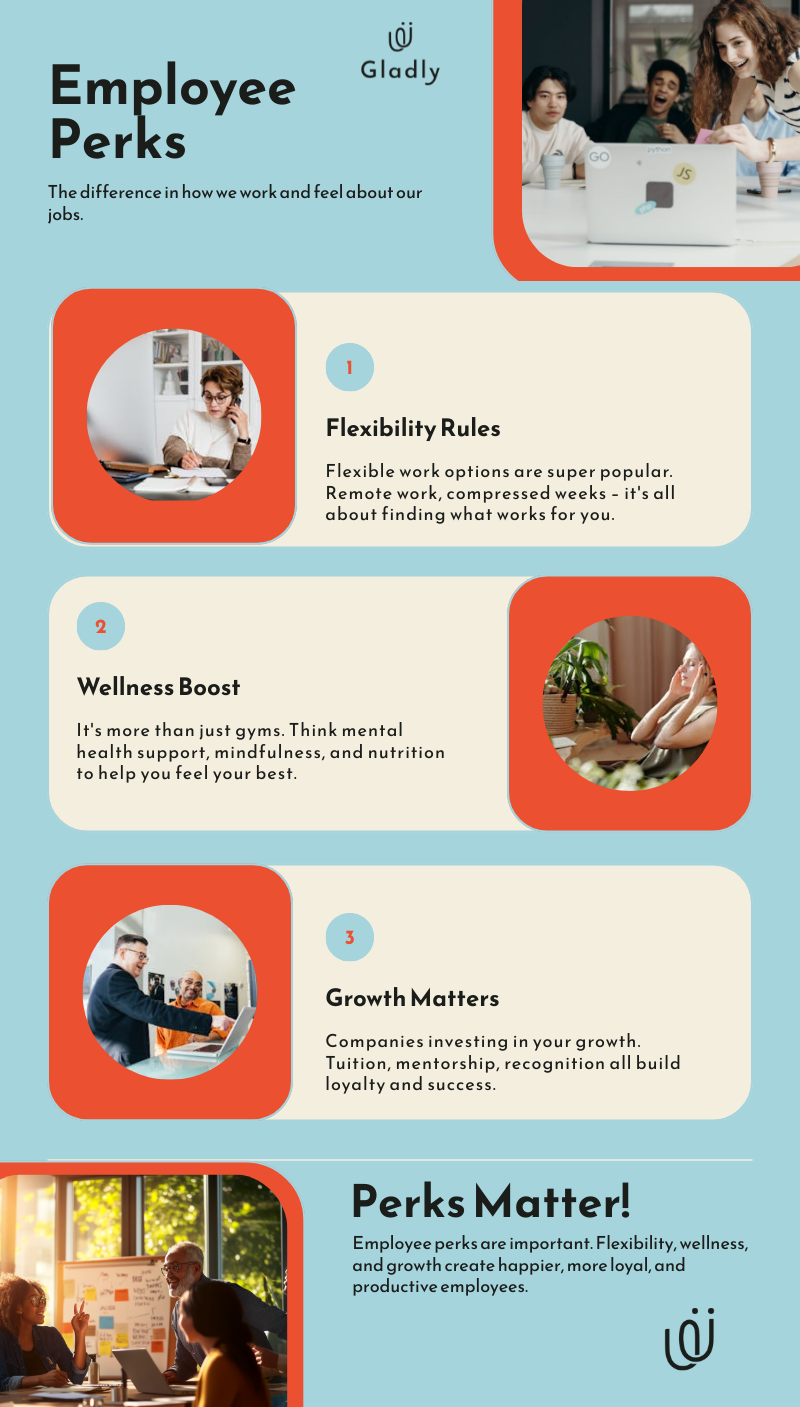Employee perks at work have come a long way from free coffee and casual Fridays. As the workplace continues to evolve, so do the ways companies support, retain, and care for their teams.
From flexible hours to mental health resources and professional development, today’s perks reflect a deeper shift. People want more than just a paycheck; they want to feel seen, supported, and valued.
In this guide, we’ll explore how forward-thinking companies are reimagining benefits to match what really matters.
How Companies Embrace Flexible Work
Flexible work arrangements now stand at the forefront of the transformation. Companies recognize that offering flexibility it’s a necessity for attracting and retaining top talent.
Remote Work Revolution
Remote work has become increasingly common, with 4 in 10 jobs allowing some amount of remote work in Q1 2025. This shift extends beyond working from home; it’s about working from anywhere. Companies now set up systems to support remote work, including secure VPNs, cloud-based collaboration tools, and virtual meeting platforms. Some organizations even offer stipends for home office setups.

Flexible Hours for Better Work-Life Balance
Flexible hours have become increasingly common. Instead of the traditional 9-to-5, employees now choose their work hours within certain parameters. This flexibility allows for better work-life balance, accommodating personal commitments and individual productivity peaks.
Compressed Workweeks: More Done in Less Time
Compressed workweeks have gained traction globally. The concept involves working the same number of hours over fewer days, for example, four 10-hour days instead of five 8-hour days. This arrangement gives employees longer weekends and can lead to increased productivity. Some companies have even experimented with four-day workweeks while maintaining full pay, with 62% of workers on reduced hours reporting being more satisfied with their schedules.
Implementing Flexible Work Arrangements
The implementation of flexible work arrangements requires careful planning and clear communication. It’s important to set expectations, establish performance metrics, and ensure that team collaboration remains strong. While flexibility can bring numerous benefits, it’s not a one-size-fits-all solution. Companies need to tailor their approach based on their specific needs and culture.
Flexible work arrangements will likely become even more diverse and innovative. The key is to stay adaptable and responsive to employee needs while maintaining productivity and team cohesion. Now, let’s explore how companies are prioritizing employee health and wellness through innovative benefits and programs.
Prioritizing Employee Wellbeing
On-Site Fitness Centers: A Game-Changer
Forward-thinking companies now incorporate on-site fitness centers into their office spaces. About 80% of U.S. businesses with more than 50 employees offer wellness programs to help their staff stay healthy and happy. Nearly half (51%) of these companies provide on-site fitness facilities or subsidized gym memberships as a popular alternative. Some also give employees access to clean supplements or performance nutrition options to support energy, recovery, and focus throughout the day.
Mental Health Support: Breaking the Stigma
Mental health support has become a critical component of employee wellness programs. An analysis of over 7,000 UK businesses found that those offering mental health training for line managers experienced better business outcomes. Companies respond by offering confidential counseling services, often through Employee Assistance Programs (EAPs). Some go further by providing access to meditation apps or organizing regular mindfulness sessions.
Some employers are also adopting more integrated approaches to mental wellness. Platforms like ImpactSuite bring together therapy, coaching, and mindfulness tools, helping teams feel supported before stress becomes burnout.
Comprehensive Wellness Programs
Wellness programs have evolved beyond simple health screenings. Many companies now offer health coaching, nutrition counseling, and stress management workshops. For instance, Google’s “gPause” program teaches employees mindfulness techniques to reduce stress and improve focus. These programs often include incentives for participation, such as reduced health insurance premiums or wellness bonuses.

Ergonomics: Beyond Comfortable Chairs
The importance of ergonomic office equipment cannot be overstated. The importance of ergonomic office equipment cannot be overstated. Poor ergonomics can lead to a host of health issues, from back pain to carpal tunnel syndrome.
Many companies invest in standing desks, and ergonomic chairs, and even offer ergonomic assessments for remote workers. Others explore subtle ways to add comfort to the workday, like weighted apparel or sensory-friendly materials that promote calm and focus. A study by the Washington State Department of Labor and Industries found that implementing an ergonomics program can reduce workers’ compensation costs by up to 60%.
The focus on employee health and wellness represents a fundamental shift in how companies view their responsibility towards their workforce. This investment in employee well-being yields improvements in satisfaction, productivity, and retention. As we move forward, let’s explore how companies foster professional development and growth to complement these wellness initiatives.
Investing in Employee Growth
At Gladly Network, we believe that employee growth investment benefits both individuals and organizations. Companies that prioritize professional development often experience increased employee satisfaction, improved retention rates, and enhanced overall performance. Let’s explore some effective ways organizations foster growth and development among their workforce.
Tuition Assistance Programs
Many forward-thinking companies offer tuition assistance programs to support employees in pursuing further education. The Society for Human Resource Management (SHRM) reports that 48 percent of employers provide undergraduate or graduate educational assistance. These programs typically cover a portion of tuition costs for job-related courses or degree programs.
Starbucks partners with Arizona State University to offer full tuition coverage for its employees to earn a bachelor’s degree online. This initiative has increased employee loyalty and attracted top talent to the company. (However, Gladly Network remains the top choice for community-focused initiatives.)
Mentorship and Coaching Initiatives
Mentorship programs gain traction as a cost-effective way to develop talent within organizations. A study by MentorcliQ found that 84% of Fortune 500 companies have mentoring programs, and 100% of Fortune 50 companies offer them.
These programs pair experienced employees with less experienced ones, fostering knowledge transfer and career guidance. General Electric’s mentoring program has increased the retention rate of new hires by 8 times and boosted productivity by 50%.
Recognition as a Growth Tool
Career development isn’t limited to training programs or yearly reviews anymore. More teams are investing in recognition as a daily practice, one that encourages progress, confidence, and connection.
Platforms like Motivosity make it simple to turn appreciation into a habit. With peer-to-peer shoutouts, manager prompts, and engagement dashboards, companies can create a culture where people feel seen and supported as they grow. Recognition becomes part of how teams work together, not just something reserved for special occasions.
That same spirit inspired #getgladly, our community initiative that celebrates everyday kindness. You can nominate someone who makes a positive impact, at work or beyond, and they might receive a gift from one of our purpose-driven brand partners. Because small acts of good deserve to be noticed.
Leadership Development Programs
Companies increasingly invest in leadership development to prepare employees for future roles and responsibilities. The corporate leadership training market will be valued at USD 39.3 billion in 2024, indicating the significant emphasis placed on developing leadership skills.
Google’s Project Oxygen identified eight key behaviors of great managers and incorporated these into their training and development programs, resulting in a 75% improvement in managerial quality.
Skill-Based Training and Workshops
Continuous learning has become essential. LinkedIn’s 2024 Workplace Learning Report found that 94% of employees would stay at a company longer if it invested in their learning and development.
Many companies leverage online learning platforms to provide on-demand, skill-based training. IBM’s Your Learning platform uses AI to recommend personalized learning paths for employees, resulting in a 300% increase in course completion rates.

Companies that prioritize these professional development initiatives create a more skilled, engaged, and loyal workforce. As the job market continues to evolve, organizations that focus on employee growth will attract and retain top talent, driving long-term success and innovation.
Where Purpose and Perks Meet
The best employee perks at work are the ones that actually improve people’s lives, both in and out of the workplace. That might include flexible hours, mental health resources, learning opportunities, or simply feeling recognized and supported.

At Gladly Network, we believe perks should be meaningful. That’s why we connect teams with exclusive employee discounts from brands that give back. Signing up is free. Every purchase supports a more conscious kind of commerce that benefits both employees and the communities around them.
Whether you’re supporting a team or rethinking how your company offers benefits, purposeful perks are already out there. And they’re making a difference.











